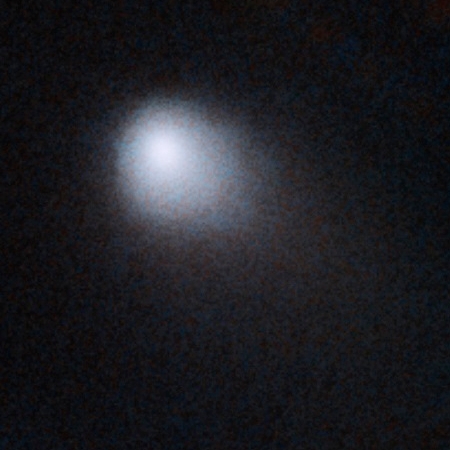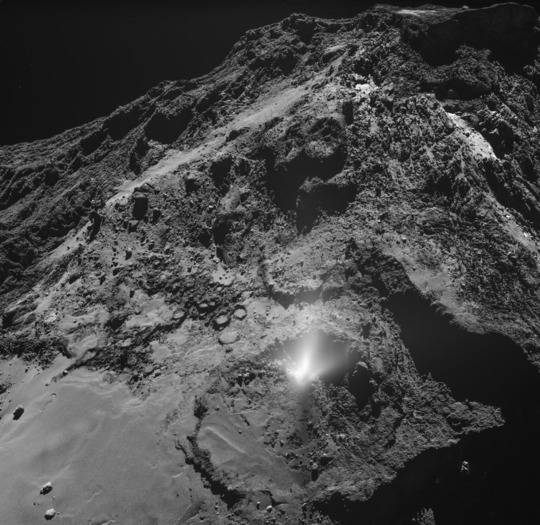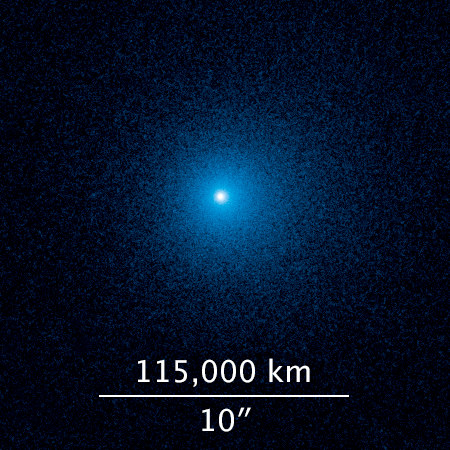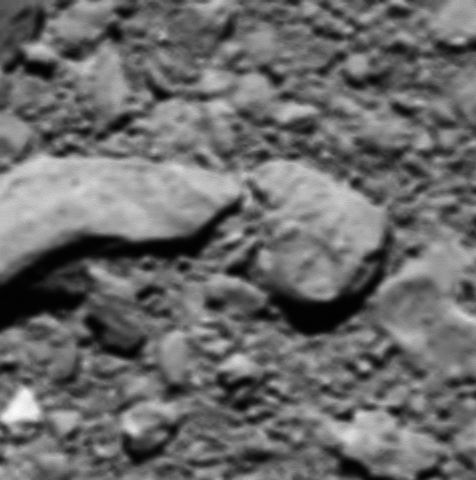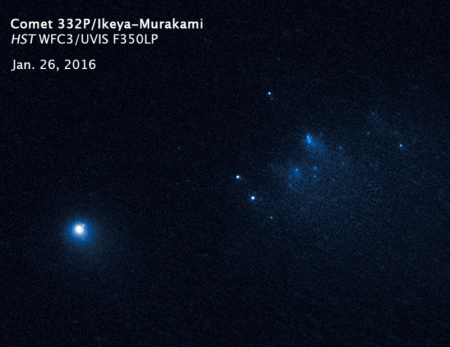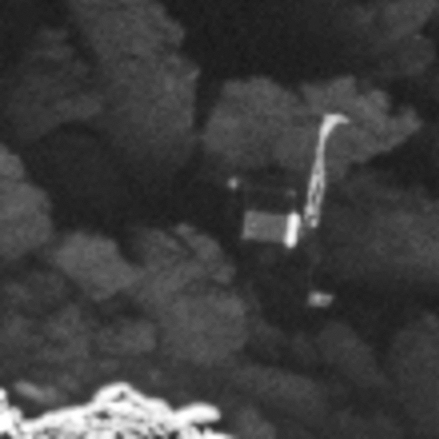First high quality image of interstellar comet
The Gemini Observatory on Mauna Kea has successfully taken the first high resolution image of comet C_2019 Q4, unofficially Comet Borisov (after its discoverer), the first interstellar comet ever discovered.
The image to right, cropped to post here, is that image. It clearly shows the growth of a coma and possible tail, indicating that as it is approaching the Sun it is releasing material from its surface.
Right now the comet is visually very close to the Sun, when looked at from the Earth, making observations difficult. As in the next few months it drops towards its closest approach of the Sun, and the Earth circles around in its own orbit, the viewing angle will improve.
The Gemini Observatory on Mauna Kea has successfully taken the first high resolution image of comet C_2019 Q4, unofficially Comet Borisov (after its discoverer), the first interstellar comet ever discovered.
The image to right, cropped to post here, is that image. It clearly shows the growth of a coma and possible tail, indicating that as it is approaching the Sun it is releasing material from its surface.
Right now the comet is visually very close to the Sun, when looked at from the Earth, making observations difficult. As in the next few months it drops towards its closest approach of the Sun, and the Earth circles around in its own orbit, the viewing angle will improve.

